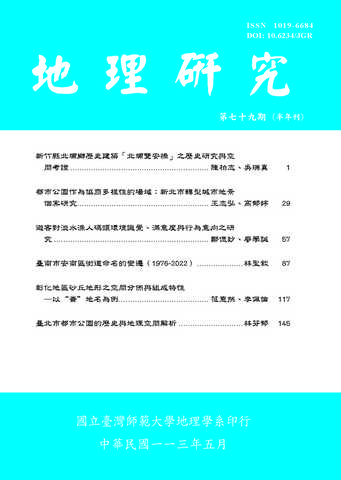 |
 本站僅提供期刊文獻檢索。 本站僅提供期刊文獻檢索。
【月旦知識庫】是否收錄該篇全文,敬請【登入】查詢為準。
 最新【購點活動】 最新【購點活動】
|
| 篇名 |
假期效應:不同季節連續假期對臺灣各區域空氣品質影響之研究
|
| 並列篇名 |
The Holiday Effect: Effect of Long Vacations in Different Seasonson Local Air Quality in Taiwan |
| 作者 |
李崇恩、陳嘉惠、郭乃文 |
| 中文摘要 |
有別於過去研究強調「都市空氣污染濃度會在假期時降低」(即所謂的:正假期效應),本研究特別指出某些地區在假期時空氣污染濃度反而會升高(即所謂的:逆假期效應)。我們使用行政院環境保護署空氣品質監測資料庫之空氣污染物監測數據,選擇 CO、PM10、NO2 和 SO2 等空氣污染物作為指標,分析臺灣西部 71 個空氣品質測站 2005 年到 2014 年間每小時污染物監測數據。研究結果表明,逆假期效應具有特定的時空分布特徵。從「臺灣假期效應時空分布圖」可以看到,北部地區的 CO 和 PM10 出現正假期效應,而南部地區則出現逆假期效應;另外,儘管臺灣北部和南部在 NO2 方面都是正假期效應,但是後者的效應強度卻弱於前者。這些結果表明,連假期間南下返鄉與旅遊的車潮可能會惡化臺灣南部的空氣品質,為了呼吸新鮮空氣而南下的遊客反而會吸到更差的空氣。然而,就 SO2 濃度和冷季空品的表現來看,上述正、逆假期效應南北差異的地理界線並不明顯。由於 SO2 排放主要與工業活動有關,可能因此不足以做為評估各式假期效應的標的,另外由於冷季時大氣擴散條件不佳,假期效應也才不容易被觀察到。綜上所述,本研究發現連假時大量往南移動的車流,確實影響南部地區空氣品質,而產生所謂的「逆假期效應」,其中 CO、PM10 正是評估逆假期效應最佳的空氣污染指標,可供未來進一步預測、分析。
While compared with the previous studies that emphasized on the decrease of air pollution concentration in the urban area during holidays (i.e. positive “holiday effect”), the current research aims to determine which locations experience increased levels of air pollution duringholidays (i.e. negative “holiday effect”). Air pollutant concentrations (CO, PM10, NO2 , and SO2 ) from the Taiwan EPA air quality monitoring database were collected and analyzed in this study. Finally, the hourly data from seventy-one monitoring stations were analyzed between 2005 to 2014. According to the results, the negative “holiday effect” eventuated in different places and has specific spatial characteristics. Based on the spatial and temporal distribution of data regarding holiday effect indicators in Taiwan, a positive “holiday effect” was observed in Norhtern Taiwan, consisting of CO and PM10, while a negative “holiday effect” was observed in Southern Taiwan. In addition, although both Northern and Southern Taiwan have positive “holiday effect” in terms of NO2 , the positive “holiday effect” of NO2 in Southern Taiwan was weaker than that in Northern Taiwan. These results indicate that the Southbound holiday migration during long vacations may deteriorate air quality in Southern Taiwan, in contrast to the popular concept of “going South to get fresher air”. However, in terms of SO2 emissions and cold seasons, the spatial difference between Northern and Southern Taiwan, in terms of the “holiday effect”, was not significant. As SO2 emissions are mainly associated with industrial activity, it may be an inadequate indicator for assessing the “holiday effect”. Furthermore, as the air diffusion conditions deteriorate during cold seasons, the “holiday effect” is less likely to be observed. In summary, the indicators of CO and PM10 can be used to explain the negative holiday effect and show the spatial difference between Northern and Southern Taiwan. Moreover, the air pollutants resulted from the vehicles that people use during their vacations may increase and will affect the local air quality in the southern areas of Taiwan. |
| 英文摘要 |
While compared with the previous studies that emphasized on the decrease of air pollution concentration in the urban area during holidays (i.e. positive “holiday effect”), the current research aims to determine which locations experience increased levels of air pollution duringholidays (i.e. negative “holiday effect”). Air pollutant concentrations (CO, PM10, NO2 , and SO2 ) from the Taiwan EPA air quality monitoring database were collected and analyzed in this study. Finally, the hourly data from seventy-one monitoring stations were analyzed between 2005 to 2014. According to the results, the negative “holiday effect” eventuated in different places and has specific spatial characteristics. Based on the spatial and temporal distribution of data regarding holiday effect indicators in Taiwan, a positive “holiday effect” was observed in Norhtern Taiwan, consisting of CO and PM10, while a negative “holiday effect” was observed in Southern Taiwan. In addition, although both Northern and Southern Taiwan have positive “holiday effect” in terms of NO2 , the positive “holiday effect” of NO2 in Southern Taiwan was weaker than that in Northern Taiwan. These results indicate that the Southbound holiday migration during long vacations may deteriorate air quality in Southern Taiwan, in contrast to the popular concept of “going South to get fresher air”. However, in terms of SO2 emissions and cold seasons, the spatial difference between Northern and Southern Taiwan, in terms of the “holiday effect”, was not significant. As SO2 emissions are mainly associated with industrial activity, it may be an inadequate indicator for assessing the “holiday effect”. Furthermore, as the air diffusion conditions deteriorate during cold seasons, the “holiday effect” is less likely to be observed. In summary, the indicators of CO and PM10 can be used to explain the negative holiday effect and show the spatial difference between Northern and Southern Taiwan. Moreover, the air pollutants resulted from the vehicles that people use during their vacations may increase and will affect the local air quality in the southern areas of Taiwan. |
| 起訖頁 |
32-48 |
| 關鍵詞 |
假期效應、時空分析、空氣污染、CO、PM10、Holiday Effect、spatiotemporal analysis、air polution、CO、PM10 |
| 刊名 |
地理研究 |
| 期數 |
201805 (68期) |
| 出版單位 |
國立臺灣師範大學地理學系
|
| 該期刊-上一篇 |
地景生態空間保育:大肚台地2003~2014的地景變遷及水文效應 |
| 該期刊-下一篇 |
應用趨勢分析探討氣候變遷下太麻里溪流域的水文變化 |
| |
|
新書閱讀
最新影音
優惠活動
|